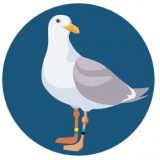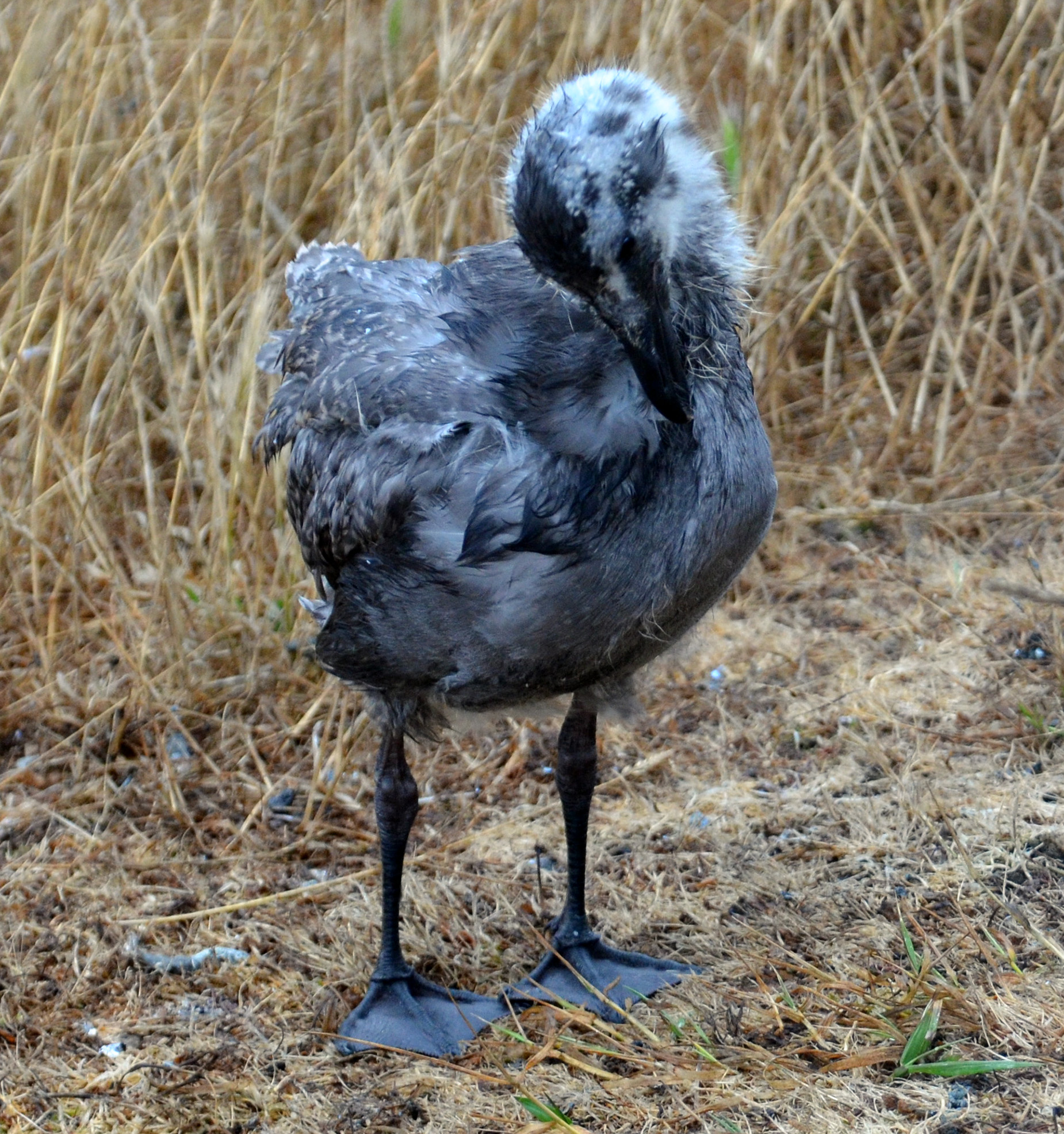The glaucous-winged gulls that breed and nest on Race Rocks are present year-round in the Salish Sea. They are being studied as indicators of ecosystem health by Environment and Climate Change Canada’s Salish Sea Marine Bird Monitoring and Conservation Program. Individual birds are identified by their colour bands. This allows researchers to track their movements over time, their location preferences (site fidelity) and survival. They also collect blood and feathers samples for genetic, physiological and contaminant analyses. Some of the birds get GPS tags so their precise movements can be followed. The project has been running since 2020. The researchers visited over 200 sites and banded over 800 gulls.

Details of the three banded gulls sighted on Race Rocks in June and July 2024. I’d love to search for more of them, but right now it causes too much mayhem with the chicks walking around to visit the shores where the non-breeding gulls hang out.
Like the three banded gulls I reported in June and July, the majority of the glaucous-winged gulls stay close to home. They did find two glaucous-winged gulls with a penchant for travel. One travelled up to Cordova Alaska to breed and another to spend the winter in San Francisco California.
They have one more year to go in the study. Next year they will be able to report on gull habitat use, diet (via stable isotope analysis they can tell if the gulls feed in marine versus inland areas), physiological health, age, and contaminant levels. From the genomics data they will be able to determine provenance (the location they came from), population structure, and the extent of hybridization.
To learn more about this project, and both glaucous-winged and the California gulls, see their 2023 and 2022 Annual Reports.

How to report a banded gull? Illustration from the ECCC poster
To contribute to this project and report a banded gull, take a photo showing the bands, record date and location and send to:
- https://forms.office.com/r/i9PG9zHCfs
- or to report with your phone, see their poster
Wildlife notes:
Three Canada geese visited the island today. Despite their size, they were pushed around by the gull parents. There were at least 40 cormorants on the island today – more than double the amount reported in the last two weekly censuses. The rain and fog today didn’t seem to affect anyone’s behaviour. The gull chicks who are not yet fully feathered appeared wetter than their parents but they still stood out in the elements.

Facility work:
- Cleaned Keeper’s house and Student House windows
- Edged along walkways
- Ran the generator on account of the fog and overcast conditions. The desalinator was running for 4 hours and produced 330 L of potable water.
DND activity:
Blasts heard today, no disturbance noted in the wildlife.
Vessels:
- 16 Ecotourism, 3 private
Weather:
- Fog and NE light air to light breeze until 14:00. Overcast conditions and SW gentle to moderate breeze the rest of the day. Daytime temperatures: low 12, high 15.
